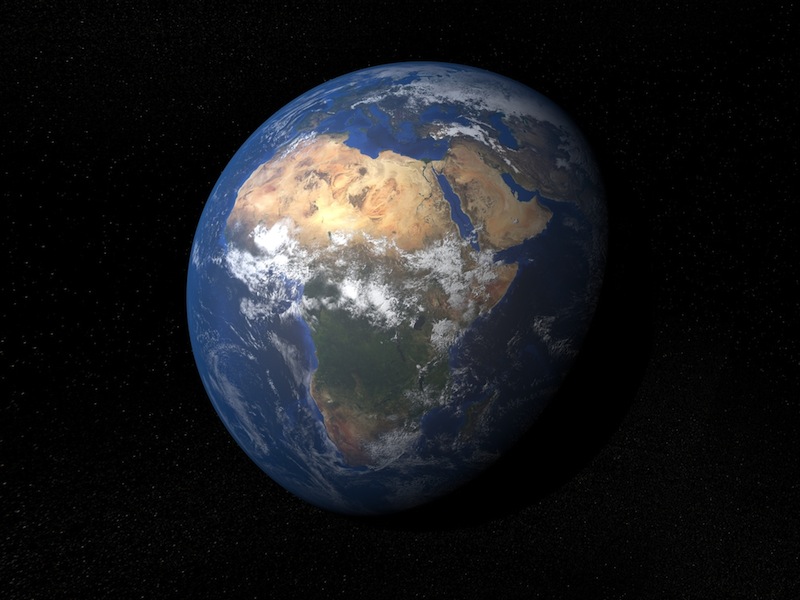Monster Tsunami May Have Created Madagascar's Giant Sand Dunes

Sometime in the past 8,000 years, a meteor may have hit the Indian Ocean, triggering a monster tsunami that struck Africa, a new study suggests.
Tsunamis are gigantic waves that are often caused by earthquakes. The 2004 Banda Aceh earthquake and tsunami in Indonesia killed about 250,000 people, and the 2011 Tohoku earthquake and tsunami that struck offshore Japan killed more than 15,000 people and triggered a nuclear disaster.
As dangerous as earthquake-generated tsunamis are, previous research suggested that they usually are less than 165 feet (50 meters) high, said Dallas Abbott, a geologist at Columbia University's Lamont-Doherty Earth Observatory in Palisades, New York, and lead author of the new study. However, researchers are increasingly unearthing evidence of mega tsunamis that dwarf regular tsunamis. For instance, scientists recently suggested that a mega tsunami taller than a 50-story skyscraper engulfed the island of Santiago off the west coast of Africa about 73,000 years ago. [10 Tsunamis That Changed History]
Now, Abbott and her colleagues have found that giant dunes on the island nation of Madagascar may have been created by a mega tsunami about 300 feet (90 m) high sometime in the past 8,000 years.
"It's interesting that we might have had such a large event within the reach of human history," Abbott told Live Science. "It would suggest that people have survived some pretty catastrophic events."
The scientists investigated sets of dunes located along the southern coast of Madagascar. These V-shaped dunes are often nested together like the chevron stripes on a military uniform — the largest of these dunes rise up to about 600 feet (185 m) above sea level and are more than 25 miles (40 kilometers) long.
Previous research mostly assumed that the matter in these gigantic chevron dunes was carried inland by the wind. Now, Abbott and her colleagues instead suggest that the matter in these dunes were carried in by an ancient mega tsunami.
Sign up for the Live Science daily newsletter now
Get the world’s most fascinating discoveries delivered straight to your inbox.
The researchers analyzed 22 samples from two sets of the Madagascar chevron dunes and their vicinity that they gathered in 2006. They focused on minerals such as calcium carbonate, which is often found in seashells.
The scientists found that calcium carbonate levels from the dunes were usually greater than 40 percent. In contrast, calcium carbonate levels in areas off the dunes ranged from zero to 9 percent, the researchers said.
"Windblown dunes typically are 100 percent quartz sand," Abbott said. "These dunes have a lot of carbonate. The sands right outside those areas have basically no carbonate."
The dunes also contained an abundance of intact microscopic marine fossils.
"If these fossils were blown inland by the wind, one might expect them to get broken to pieces as they bounce off the surface," Abbott said. "However, if they were transported by the water, one might expect them to remain whole. We see whole intact microfossils, for the most part. You do see a little bit of wear at their edges, but that's because they could've been reworked by the wind after they were carried in by the water. You don't really see them broken to pieces."
In addition, the presence of magnesium in the fossils suggests that, at one time, they were buried in warm, shallow, brackish waters. "They weren't sitting exposed on a beach — they were somehow excavated," Abbott said.
The researchers suggested that the monster tsunami may have been triggered by a comet or an asteroid striking the Indian Ocean. The cosmic impact may have created Burckle Crater, a pit about 18 miles (29 km) wide, located about 900 miles (1,450 km) southeast of Madagascar, about 12,500 feet (3,800 m) below the ocean's surface, they said. [Crash! The 10 Biggest Impact Craters on Earth]
"There are other deposits of material around the Indian Ocean that suggest they and the Madagascar dunes are evidence of a cosmic impact," Abbott said. "In western Australia, you see carbonate-rich sands that go up to 150 meters (492 feet) above sea level and 7 kilometers [4.35 miles] inland. Those sites could be contemporaneous with the Madagascar event, although we don't have enough data to say that yet."
However, "it's difficult to confirm that Burckle is an impact crater," Abbott said. "That's the problem with underwater craters — it's hard to verify their origins."
It is possible that the mega tsunami that may have struck Madagascar was not caused by a cosmic impact but rather a terrestrial event such as a massive landslide. "However, the effects of a large landslide are usually quite local," Abbott said. "If we find the Madagascar and Australia events are the same age across the Indian Ocean, then a cosmic impact may be responsible instead."
Future research can gather more samples from Madagascar for analysis and conduct wind-tunnel experiments on microfossils to see if they remain intact after many bounces or break up as expected, Abbott said.
Abbott and her colleagues detailed their findings Dec. 14 at the annual fall meeting of the American Geophysical Union in San Francisco.
Follow Live Science @livescience, Facebook & Google+. Original article on Live Science.











